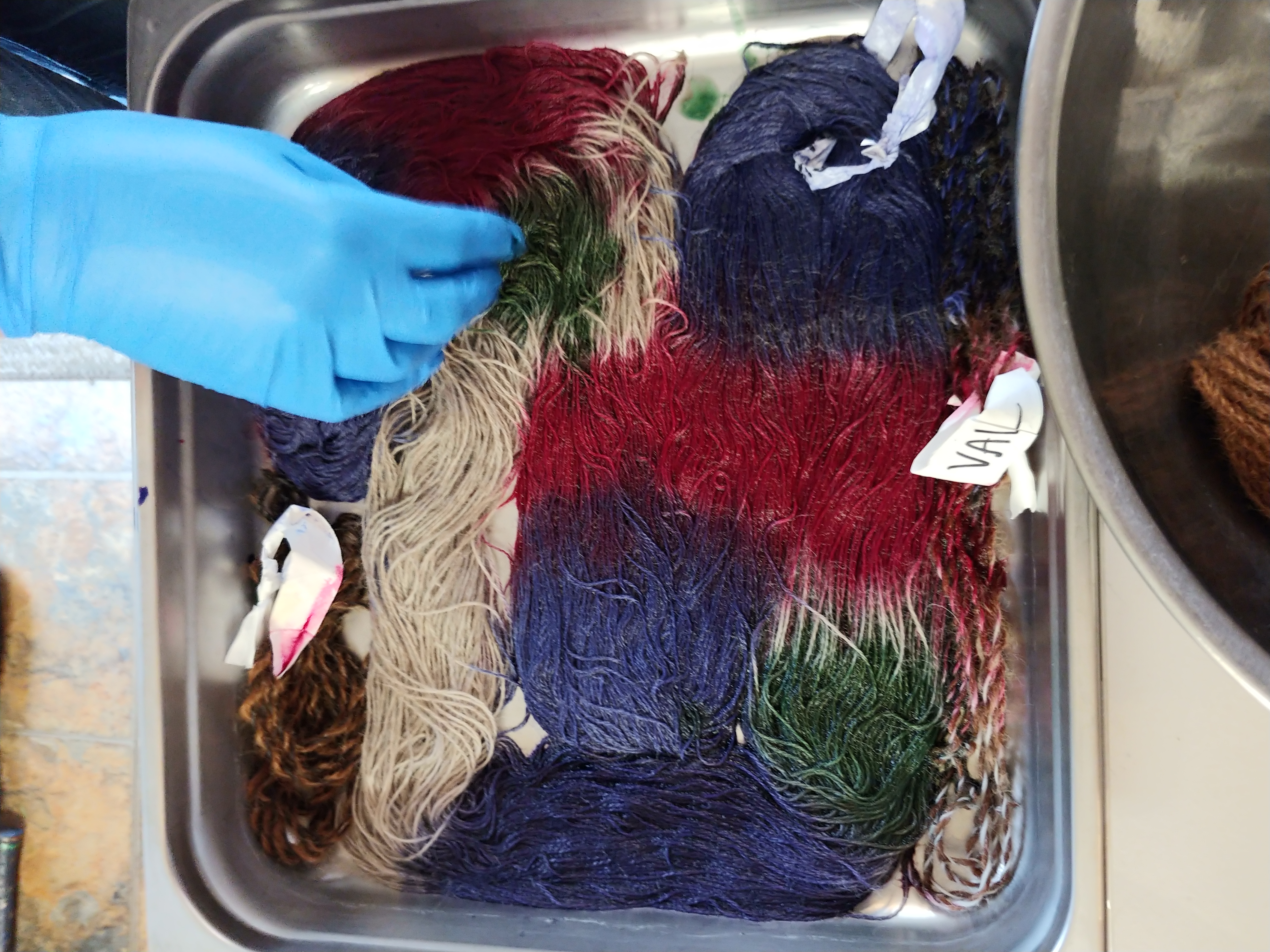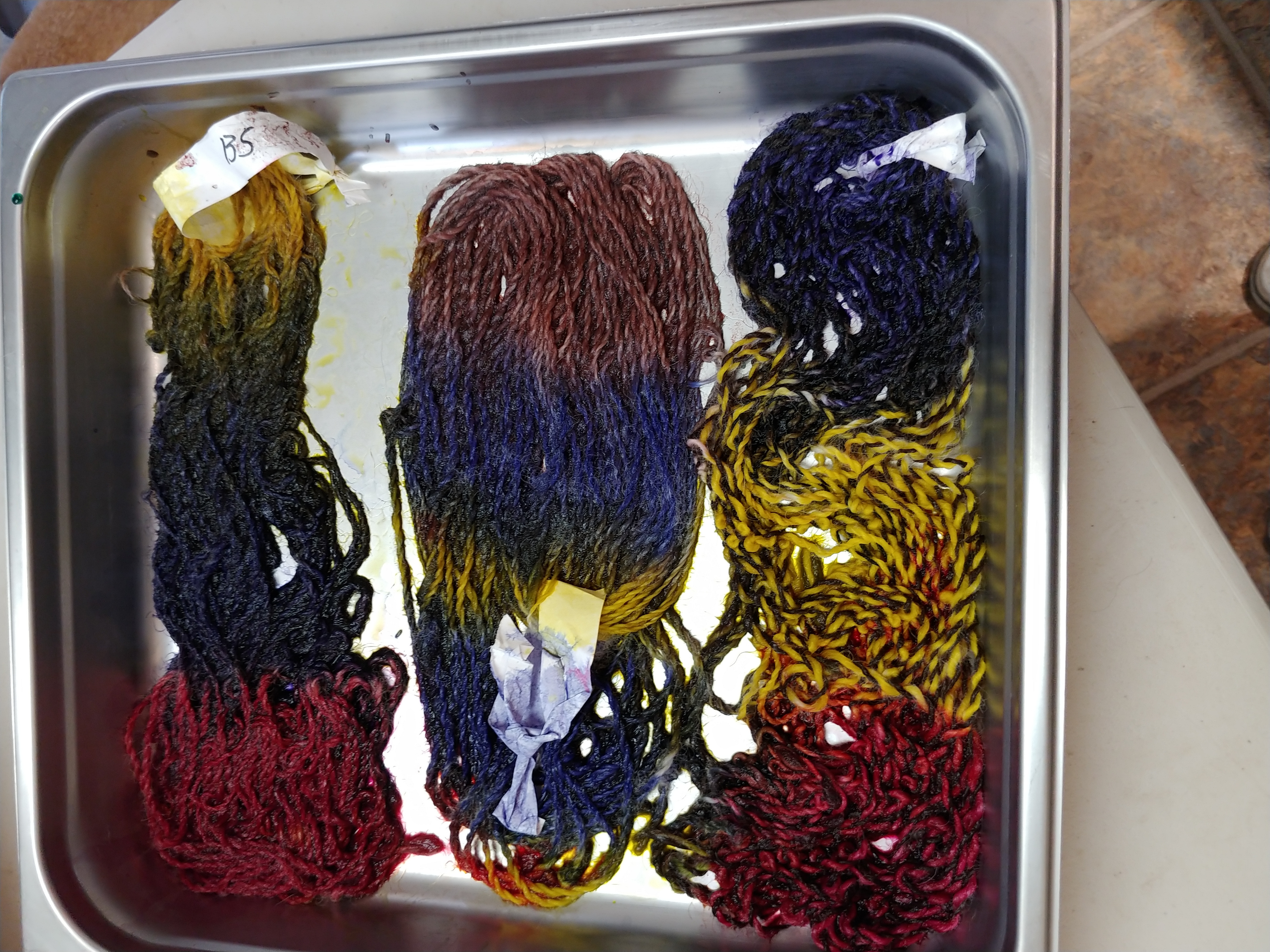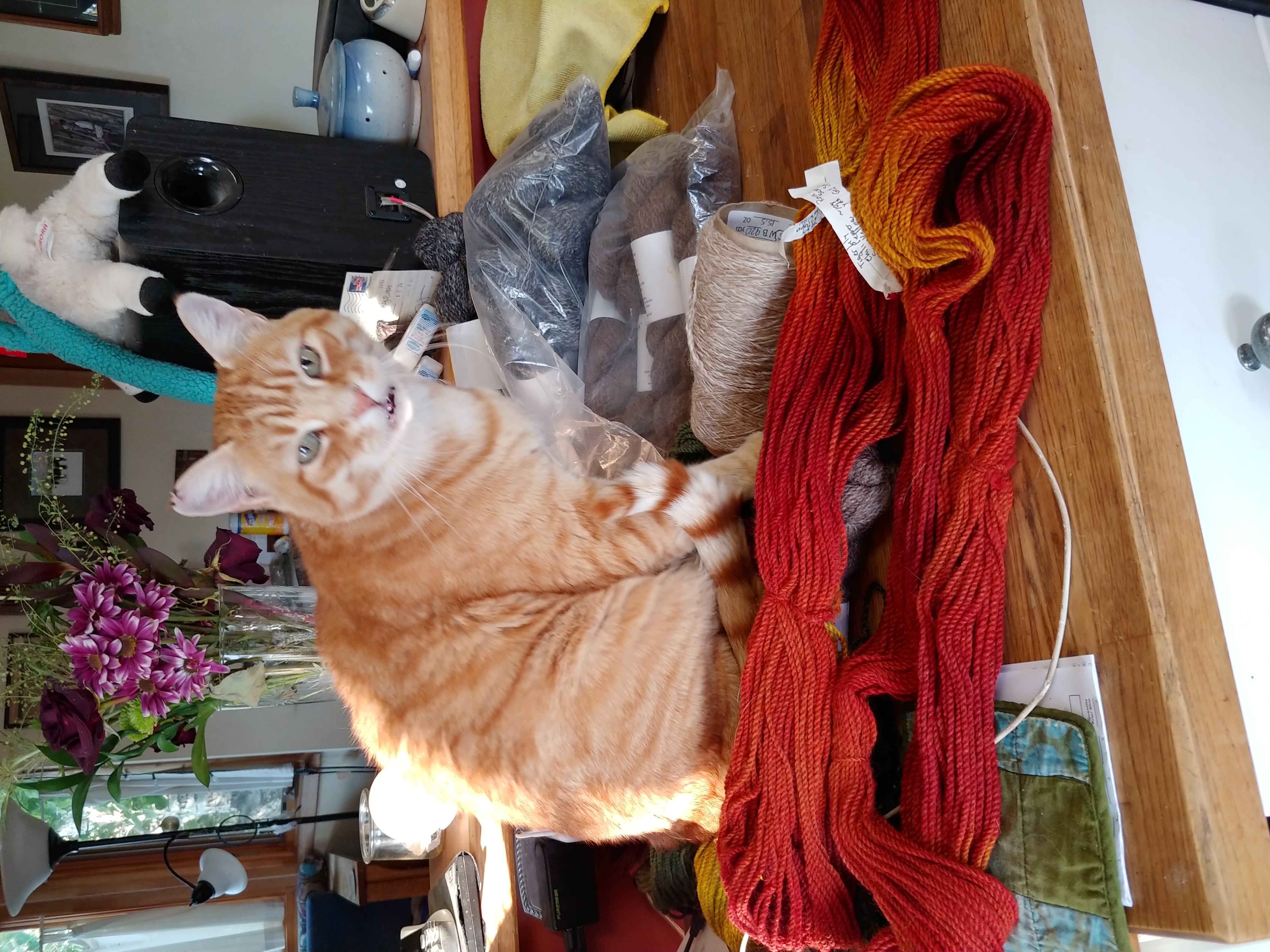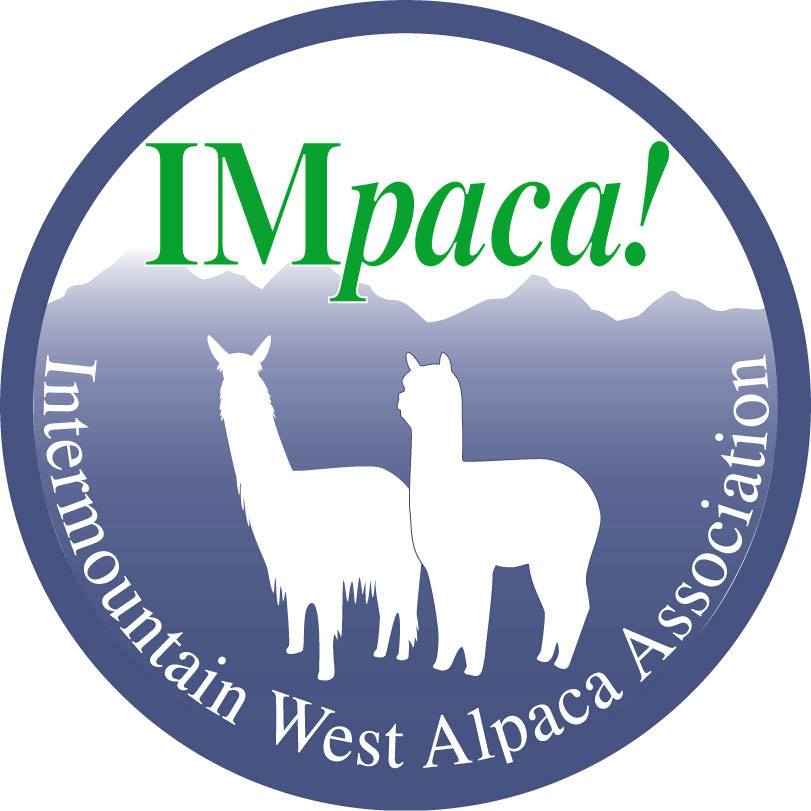April 2021
Shearing Day!
For many of us, there are two days that are the most crazy days: our shearing and hay days. Shearing Day comes first, and is right around the corner for most of us. Whether this will be your first, your last, or somewhere in between, we've put this together for you as a reference or to help those that you may mentor. Many thanks to Valerie Opoulos for the compilation.
Preparation for Shearing Day
Book Early - It is important to book. your shearer in January or even the previous year. If you are new to alpacas and didn't realize this, then contact other alpaca owners for references. If you only have a few animals see if you can bring them to a larger farm on their shearing day. Make sure you compensate that farm for fees and give your assistance on that day. If you have never experienced a shearing day ask to visit someone who is scheduled earlier than you. They'll appreciate the extra hands and you can learn!
Secure Assistance - Shearing day can be the most stressful day of the year for you and for your animals if you are unprepared! Make calls to family, friends, and other volunteers and ask them for help on shearing day. Someone holding a bag open can be a real help at the right moment. Make it a harvest celebration of your year of hard work! Let them know to wear work clothes and that you will give out assignments according to desire and skill. Show your appreciation by providing much needed water and snacks.
Services and fees - Ask the shearer questions! It is important to know if there is a travel and set-up fee added to the shearing fee. It is also important to know if they have additional services available, like teeth and toenail trimming. Ask whether those services are added fees or are included in the shearing fee. Ask first if you can do vaccinations while the animals are secured; don't surprise your shearer with that request as he is letting the animal up to go to the next one. Remember, it is standard to give your shearer an added tip. Be prepared so you don't come up short when it's time to pay.
Prepare animals - Animals need to be dry and relatively clean. Do not wash the animals!! If bad weather is imminent, it may be necessary to put them i a barn to stay dry. In the days leading up to shearing you need to restrict their access to ponds, pools, sprinklers and other ways they can get wet so their fleeces are dry. Keep them in areas that are free from vegetation that can invade their fleece with their happy rolling in every undesirable item. Sawdust and wood chips are not your friend when trying to keep a clean fleece! Some determined animals might need to be fitted with a show covering. Large pieces of hay and leftover mud can be brushed off when dry. We've seen people use horse brushes, new, unused toilet brushes, shop vacs, and miniature leaf rakes. Use whatever causes you and your animals the least amount of stress. Do NOT do a deep cleaning that disturbs the natural adhesion or the integrity of the fleece.
Halter training - Shearing day should not be the first or only time the animals are haltered. Take time to give refresher courses to older animals. Begin training for younger animals well in advance. Animals born in the spring can usually be carried due to their small size. Many experienced alpaca owners and vets suggest shearing every animal that has four feet on the ground. Older animals with 1 1/2" or less growth can go every other year between shearings. Make sure you have adequate numbers and sizes of halters and leads.
Prepare shearing area - Make sure the area that you want to have for shearing is clean and free from hazards. If this requires a spring cleaning, then get to work early! This is not a last-minute chore if you want to reduce stress. Think of every crazy way an animal or a worker can get snagged, tripped, or an item can fall down on them. It will likely happen in the organized chaos of shearing day. your shearer will need access to electricity and plenty of room, especially if there is a crew and they stage two areas so one shears and then switches so the other can do trimmings. Shade is imperative. A barn, trees or even temporary 10X10 tent awnings will help keep animals and people cooler.
Gather supplies - Make a list of all the supplies you will need for shearing day. It helps to pre-label your fleece bags with date, name of alpaca, type (blanket, neck, 1sts, 2nds, etc). Have them in order of how you will have your animals sheared. Many shearers start with the light-colored alpacas, then move to the darker-colored ones. Have a plan for your fiber. It is important to know if you are going to noodle the fleece or bag it as a whole fleece or divide up the blanket from the rest of the fleece. Use clear, NOT black plastic bags, 35 gallon is best. When bagging your fleece, leave it open to air dry or a day or two in a safe place away from rodents, chickens and cats. Then tie it loosely. If you plan to vaccinate, have your needles, syringes and vaccine purchased and ready. If you plan on administering pest deterrents, have them ready as well. Make sure these activities don't interfere with the work of your shearer.
Don't forget shovels, rakes, brooms, towels, paper towels, garbage cans and other items that may be needed to clean up accidents, spitting, and unwanted loose fiber. It is wise to have a first aid kit and styptic powder to control bleeding available for unseen problems. Have a vert on call if you feel the need. Any and all items you feel important for a successful shearing day should be put together no later than the night before. Check lists are your friend!
Plan for animals - Plan how to bring the animals together before shearing. Know how you want to separate and hold them before and after shearing. Temporary catch pens can be set up as well as designated areas for those who are finished. Have a plan when you want to vaccinate or do other herd health activities that work together and not against your shearer's activities. Withholding food and water for 12 hours previous to sharing can reduce spitting and accidents. This can be determined by the health and other needs of your animals.
Plan for people - Communicate with your shearer and your helpers! Reminders and updates are essential. Have your drinks and snacks purchased and stored ahead of time. If you want coolers adn ice for drinks and food, make sure it is part of your plan. Make sure you have a job for everyone and they understand what it is. Bag holders, sweepers, drink go-fors, and urine wipers are ALL essential for a smooth and relaxed day. Remember, kind words during stress help people perform their best. Make sure they know how much you appreciate them!
Be mindful to put away dogs that don't like strangers or that may just get in the way.
BREATHE - You can eliminate much of the unneeded stress that shearing day can br9ing by preparing and planning. You've got this!
Celebrate - Take pictures of your helpers, your shearing, and that beautiful fleece. Write down, while it's still in your mind, anything that you would want to change or make improvements on next year!
Our best to you all,
Julee Savage, IMpaca President
Valerie Opoulos, Vice President
Diena Riddle, Secretary
Deb McMurtrie, Web Page
Linda Kenison, Treasurer
Dr. Cotton has unfortunately been suffering effects of illness occurring earlier in the year, and must focus on her health. We hope for her speedy recovery! Please continue to watch impaca.org and our IMpaca Facebook page for more information on events we are planning in 2021.
**************************
Dr. Toni Cotton returns for her popular neonatal workshop
April 24, 2021
8:30am - 4:30pm
Pleasant Grove, UT
Dr. Toni Cotton will be teaching a neonatal seminar that will equip you with the skills and knowledge to recognize and handle challenging births.
This seminar will include normal and abnormal births; cria support and care for little ones who had a challenging start; and a hands on wet lab to help you understand the ins and outs of birthing, correcting a bad presentation, cria tube feeding and much more.
The more you know, the better prepared you will be for that (hopefully rare) difficult birth and support for the cria and dam.
Please sign up at our IMpaca Facebook page!
September 19, 2020
To Dye For, Two
We had a great time playing with color at Sunrise Ranch (Deb McMurtrie & Jim Martin in Kamas)!
We treated it as a play-day, using mill-ends donated from Crooked Fence Mill, and commercially spun alpaca and seeing how they turned out after dyeing.
The dye-setting technique was novel - baking in the oven!
 base yarn & dyed skein
base yarn & dyed skein
 Applying dye to soaked skeins.
Applying dye to soaked skeins.
 Ready for the oven.
Ready for the oven.
 Diesel the cat admiring the final products.
Diesel the cat admiring the final products.
As the Australian shearing season draws to an end and the northern hemisphere start to think about shearing I thought I might write a few notes from a shearers perspective in the hope to help you ensure your shearing runs smoothly (particularly if it is your first shearing season) and you have a good day. All the following come from real experiences.
Save your shearer a wasted trip
If your stock are wet let your shearer know, it's very rare you will find someone to shear wet stock, it's more difficult, more costly, not pleasant for anyone concerned and can be detrimental to both stock and shearing team.
If your little darlings just will not cooperate and you have not been able to get them penned unless there is an agreement that your shearer will pen them again save us a trip. We will not pen alpacas as we do not know your property or your stock and cannot afford injury while trying to help. If we get injured its not just your shearing that is compromised its everyone else who follows as well.
Penning Stock
While a dedicated shearing shed is always nice its not essential but there needs to be a flat area with no trip hazards, easy access by vehicle and power. We do always keep a generator with us but it is nice to know in advance if we are going to need it. If vehicle access is an issue discuss it with your shearer, over the years we have got vehicles stuck in interesting places from really sandy paddocks to the vehicle falling down wombat burrow after it collapsed as we unknowingly drove over it or even areas so steep that the handbrake will not hold the vehicle.
Pen stock well in advance and ideally take off feed (12 hours plus), this has multiple advantages, they are easier to move, less prone to spitting and its more comfortable for the alpaca to be sheared. I use the comparison of us eating a large full cooked breakfast and then imagine what it would be like to be stretched out. Please do not leave them in a pen with a large quantity of food they are not used to it can in the worse case cause them serious health issues (eg pem) or they just spit it all out over everyone and its a waste of your feed and money.
Do not present seriously ill or injured stock for shearing it will avoid disappointment when told by the shearer that they do not believe the alpaca to be fit to shear.
Pen stock by class, it really is not a great idea to pen your pregnant females with your stud males, shearing time is for shearing not spit offs or matings!
Prepare in advance
What vaccinations, vitamins, minerals etc are being given at shearing if any at all and whos providing them?
Are you taking fleece samples, just a midside or samples from multiple locations (eg our top stock I will ensure we have samples from brisket, shoulder, midside and hip.) Who is taking them if its the shearer tell us. How are they being stored and labelled?
Know what you are going to do with your fleece in advance. Hopefully, it will be skirted and sorted at the time if not how is it going to be packed? Do you have enough bags? How are you going to label the bags or do you not worry about tracking the fleece back to the alpaca.
Where are alpacas going after they are sheared? They need a way to either return to their paddock or a holding yard. They cannot just hang around the shearing area. Cria can be a particular hazard especially if they decide they can sneak a feed from a captive mum.
If you know or suspect your alpacas / llamas have lice or other external parasites let your shearer know in advance we all do our best to try and ensure we do not bring contamination with us but you have to help.
The alpaca fleece market is currently the most buoyant I have ever seen it and shearing is the culmination of a years work for you and your alpacas so enjoy it.
10/11/2018
It's that time of year - IMpaca Board nominations!
Mike Riddle is the nominating committee:
"We are currently in the process of receiving nominations for our Board. There are two open two-year positions.
All nominations and corrections to your address, email, phone numbers, etc. should be emailed to:
If you have been nominated, you will be asked to submit a paragraph telling IMpaca members something about yourself, relevant experience etc., and what you feel you could contribute to our organization.Submit that to:
circlecliffranchalpacas@gmail.com on or before October 25, 2018. A compilation of these names and descriptions, along with voting information, instructions and ballots, will then be mailed to each IMpaca member. We would appreciate your voting and returning them quickly to the address provided on your self-addressed, self-stamped envelope.
*****
5/10/2017
An invitation from the SpinOff coordinator for the Alpaca Association of Western Oregon (AAWO), Linda Bolewicz:
The AAWO SpinOff is open for entries.
As you know, a SpinOff is an easy way to compete – you don't have to spin! Just mail in a 2-4 ounce sample of fleece (which leaves enough of the blanket to be processed or entered in more shows). An experienced judge will spin a small skein and evaluate it according fineness, handle, ease of preparation, and other desirable characteristics, giving you valuable feedback. Plus, your alpaca’s fleece and your farm name will be viewed by thousands of visitors to the Oregon Flock and Fiber Festival.
Fleeces from both 2016 and 2017 shearings are eligible; there is no limit on the number of entries from one farm. Because we want to be inclusive, you don't have to be an AOA or AAWO member.
We have $100 cash awards for Judge’s Choice in Suri and Huacaya.
Youth (18 and under) and 4-H members qualify for their own division, a reduced entry fee of $5, and are eligible for their own cash prizes. They don't need to actually own the alpaca, and their alpacas don't need to be registered.
So check out your fleeces – those stored from last year and those still on your animals – and get them ready to send. Our deadline is June 28th – we’re looking forward to seeing all your wonderful fiber.
The deadline is June 28, 2017.
Linda
 base yarn & dyed skein
base yarn & dyed skein Applying dye to soaked skeins.
Applying dye to soaked skeins. Ready for the oven.
Ready for the oven. Diesel the cat admiring the final products.
Diesel the cat admiring the final products.